
Allergies and immunotherapy
Overview of allergy tests
The prices are valid from 1.1.2025 to 31.12.2025.
.
What is the allergy?
It is a disease genetically programmed that gives rise to an anomaly immune reaction when the animal is in contact with habitual substances in the environment such as pollens, mites, and food proteins... These substances are called allergens, and they are able to cause allergy reactions, always inconvenient and sometimes very severe. The possible ways of entry of the allergens are: inhalation, ingestion or by contact (Gross the skin).
It is important to know that not all the diseases with pruritus have an allergic origin, since the animal can show itches because of hormone problems, external parasites (fleas, mites...), infections by bacterium or fungus...
Frequently the first symptoms can be unnoticed, showed in some periods and as the disease goes on these are more obvious and stronger and they can last more time.
The Most frequent symptoms are:
- Intensive scratching of the face, ears, armpits, groins and anal zone
- Constant lemick of the extremities (hands and feet)
- Rubbing the face (eyes and lips)
- Biting the dorso-lumb zone, tail, legs etc.
- Frequent otitis
- Injuries, scratch, etc, as a consequence of the scratching
- Darkness of the skin in the alopecy zones
- Less hair and without shine
- Bad smell
- Thicker skin
- Gastrointestinal alterations (vomits and diarrhoea) alternates or continues
Most of these symptoms are as well compatible with many other diseases that are not allergies, some of them even contagious for humans like the sarna sarcoptic, so if our pet shows some of these symptoms, we must go to the veterinary so he can achieve a correct diagnosis and get the correct treatment.
.
Signs of allergies in animals
Otitis 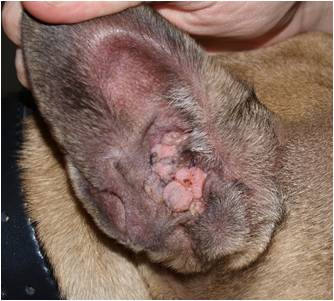 |
Conjunctivitis 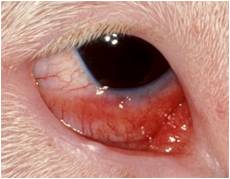 |
Seborrhoea 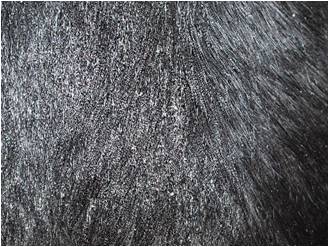
|
Alopecia |
Dermatitis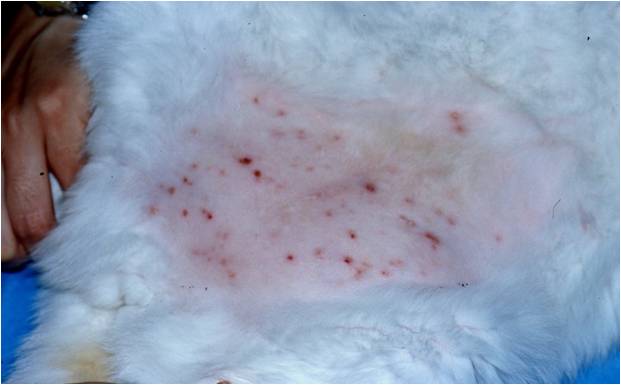 |
Eosinophilic plaque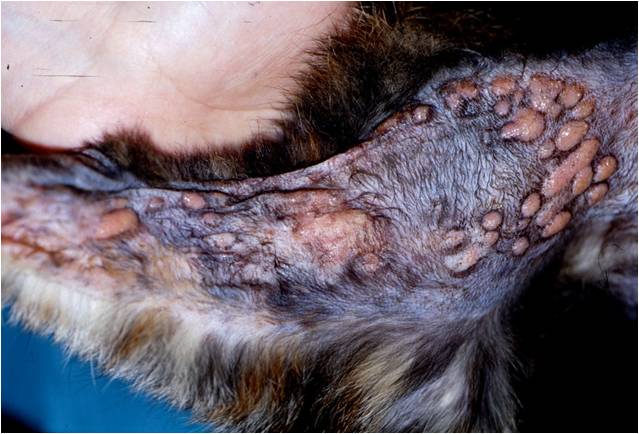 |
Indolent ulcer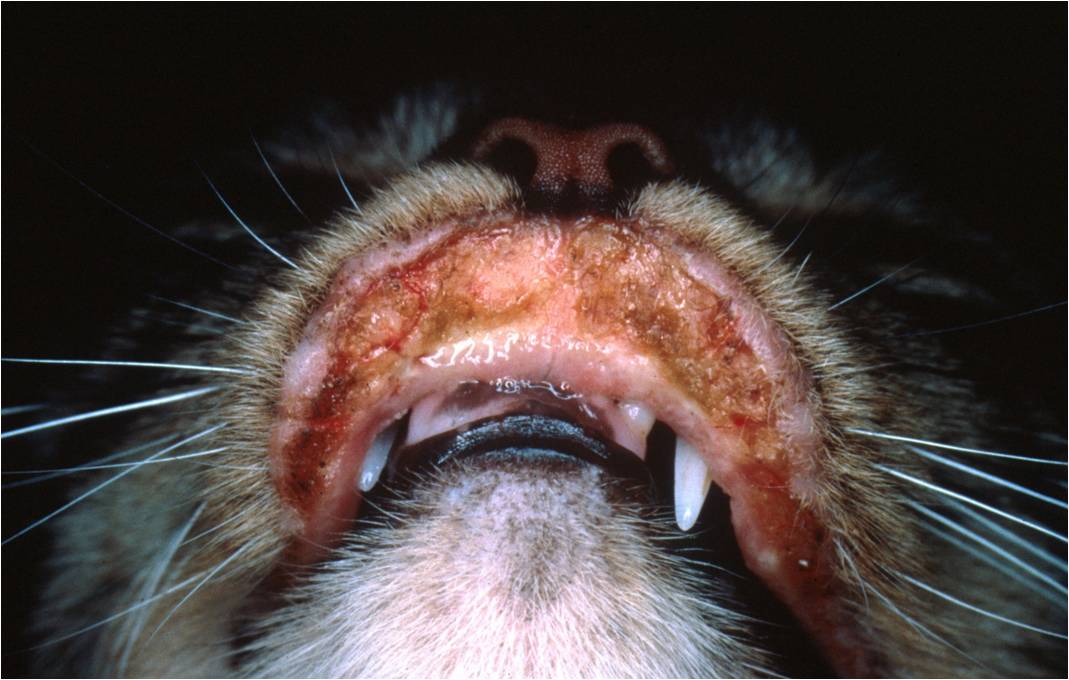 |
Eosinophilic granuloma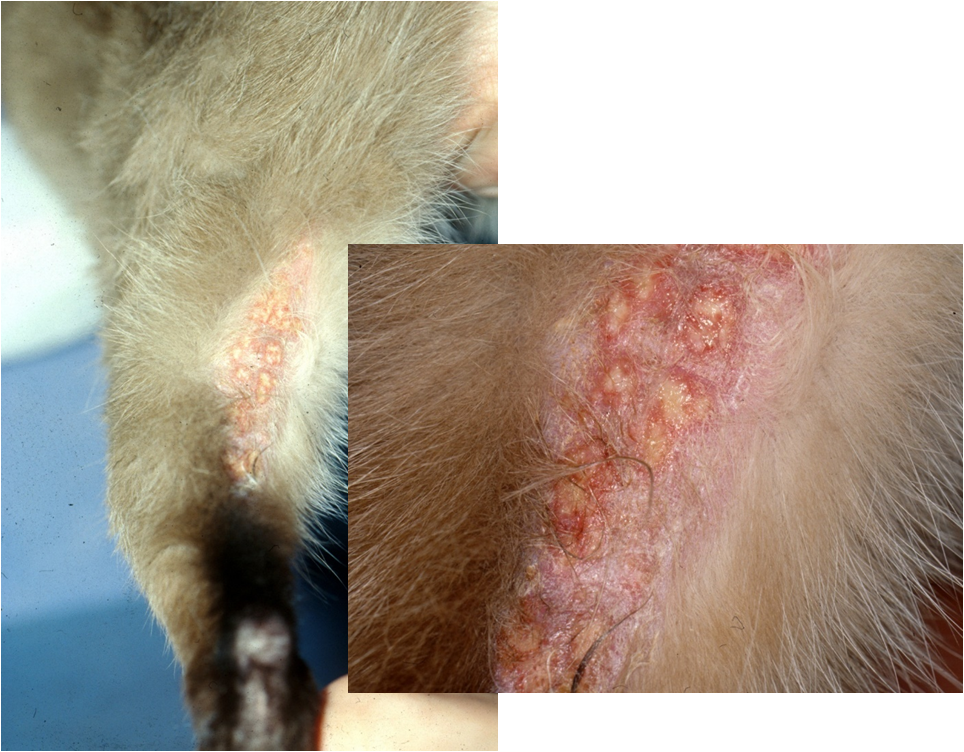 |
Excoriations 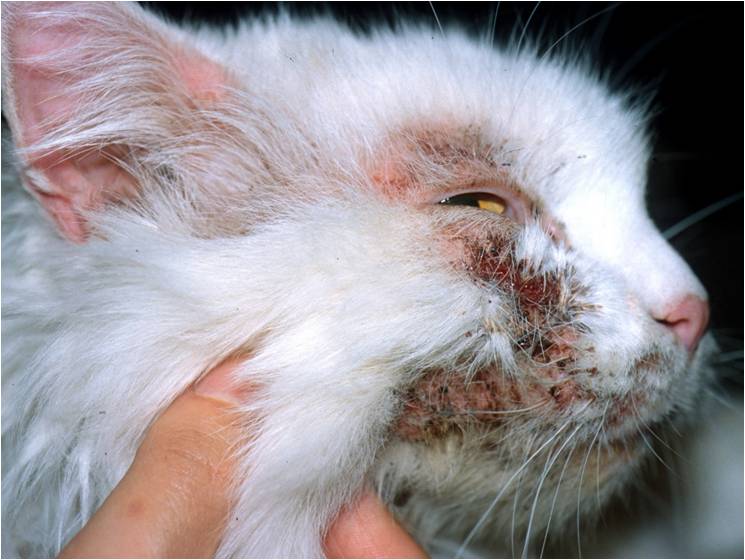 |
Pioderma 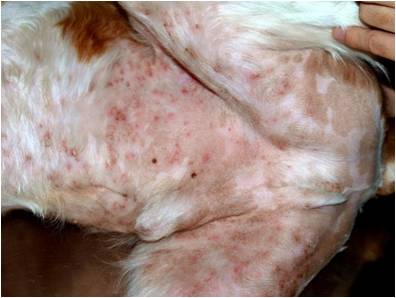 |
External parasites 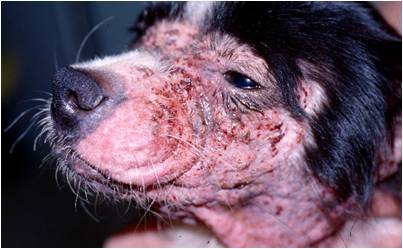 |
Sarcoptic mange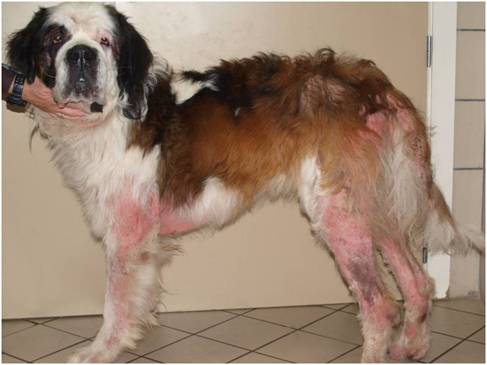 |
Malassezia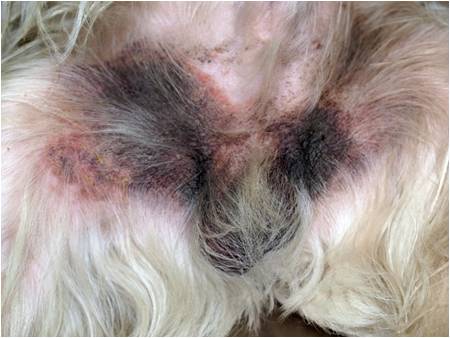 |
.
Most common allergies
- Atopic Dermatitis: It happens with the exposure to the environmental allergens that go through the animal by cutaneous or breathing way and produce the symptoms. It is a chronic disease that needs a good management of the veterinary and a great collaboration of the owner. The most frequent allergens are: dust mites, some tree pollens, and grasses...
- Food allergy: It is a disease produced by ingesting proteins inside the food and that produces an allergic reaction, with the same symptoms as in the atopic dermatitis. In some cases the food allergy can cause gastrointestinal symptoms, especially alternates or continuous diahrreas.
- Flea bite allergic dermatitis: In this case the allergen that produces the symptoms is the flea saliva, that produces the allergy reaction by biting.
Example of summer dermatitis in horses:
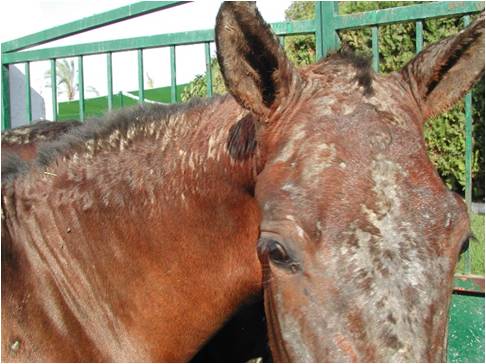
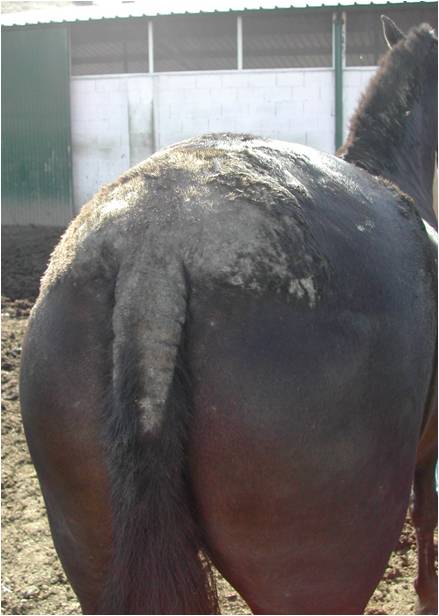
It is important to consider that some allergic animals can present the symptoms as a consequence of combination of several allergies named above, and that can produce stronger symptoms and can difficult the diagnosis and control of the disease, so it is very important to put the case into the specialist hands so that they can evaluate the clinic history and achieve a complete study of the diagnosis.
.
Choosing the panel
S.A.T ELISA®: It is a test of screening that tells us if the animal presents antibodies IgE or IgG set against environmental or food allergens, and therefore could be considered allergic, but it does not specify to which allergens. This test results of utility as a first step in the diagnosis and guides us on the road to go on from that moment.
P.E.T ELISA®: It can be for environmental allergens, food allergens or both. This test details exactly the allergens that are causing the problems in the animal and it gives us clearly the direction forward to an effective treatment. It's used is essential to manufacture a specific immunotherapy for this animal, or to give us the direction to establish an elimination diet. Nextmune S.L. recommends to do the two types of panels (environmental and food) since the two types of allergy come together in a high percentage of the cases.
The hot news in the diagnostics is innovative test that blocks production of IgE antibodies against cross-reactive carbohydrate determinants (CCD) - now as a part of S.A.T and P.E.T ELISA tests.
.
Does any medication interfere with the diagnostic test?
.
How can we prevent the allergy?
Because of the genetic character of the allergy, there is no efficient way to prevent it, however, from the point of view of the theory, the control of the disease is based on the elimination of the environmental substances that produce it. For example: elimination of the fleas in the case of fleabite allergic animals or to move the animals to an environmental free of the allergen (some seasonal pollens). In the case of food allergies we must identify and avoid those components that caused the disease. Unfortunately in most of allergy diseases it is impossible to remove the causing agent (dust mite allergy, some pollens in the dog environment etc), so we must use medical treatments to control the symptoms.



